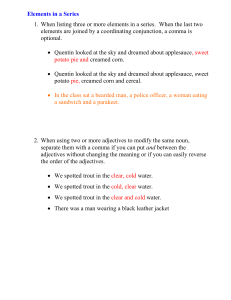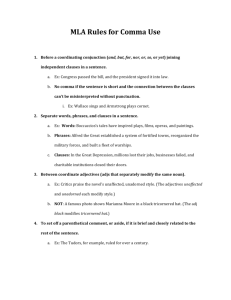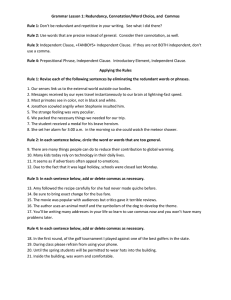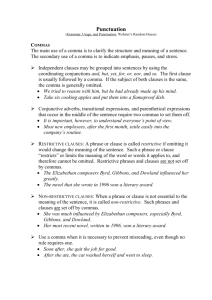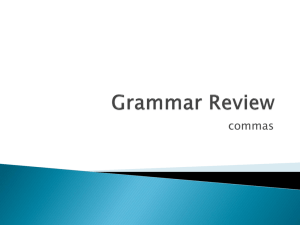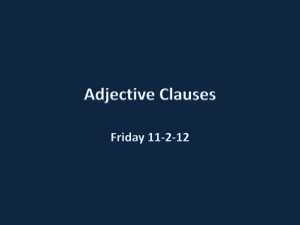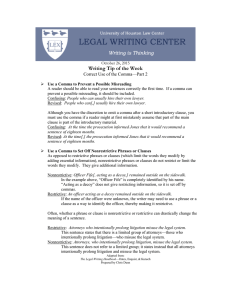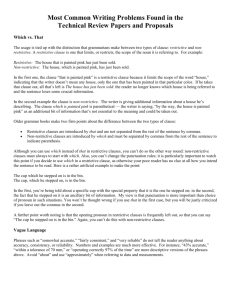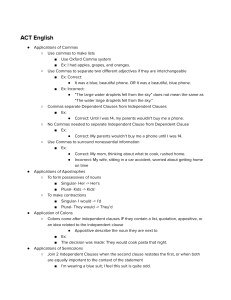Writing Tip of the Week
advertisement
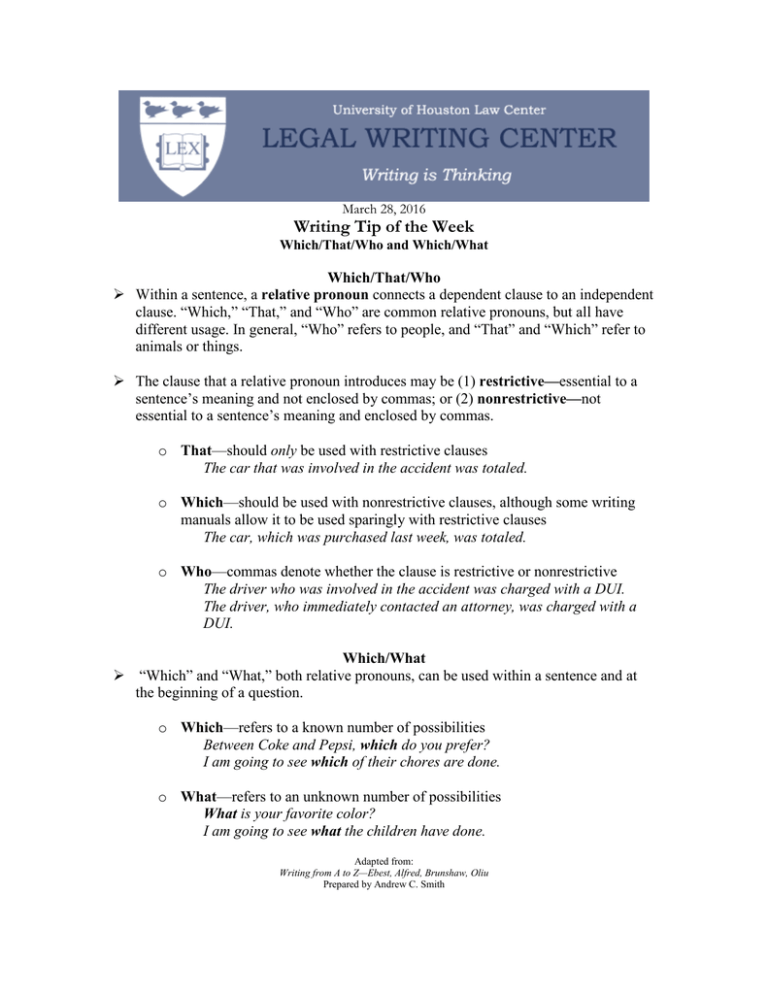
March 28, 2016 Writing Tip of the Week Which/That/Who and Which/What Which/That/Who Within a sentence, a relative pronoun connects a dependent clause to an independent clause. “Which,” “That,” and “Who” are common relative pronouns, but all have different usage. In general, “Who” refers to people, and “That” and “Which” refer to animals or things. The clause that a relative pronoun introduces may be (1) restrictive—essential to a sentence’s meaning and not enclosed by commas; or (2) nonrestrictive—not essential to a sentence’s meaning and enclosed by commas. o That—should only be used with restrictive clauses The car that was involved in the accident was totaled. o Which—should be used with nonrestrictive clauses, although some writing manuals allow it to be used sparingly with restrictive clauses The car, which was purchased last week, was totaled. o Who—commas denote whether the clause is restrictive or nonrestrictive The driver who was involved in the accident was charged with a DUI. The driver, who immediately contacted an attorney, was charged with a DUI. Which/What “Which” and “What,” both relative pronouns, can be used within a sentence and at the beginning of a question. o Which—refers to a known number of possibilities Between Coke and Pepsi, which do you prefer? I am going to see which of their chores are done. o What—refers to an unknown number of possibilities What is your favorite color? I am going to see what the children have done. Adapted from: Writing from A to Z—Ebest, Alfred, Brunshaw, Oliu Prepared by Andrew C. Smith
